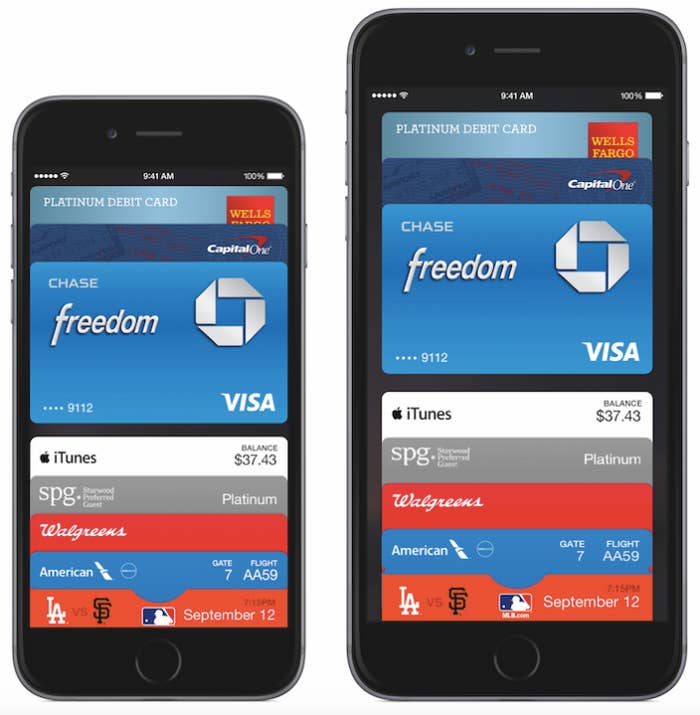
Today, Apple drops iOS 8.1, its first major update to iOS 8. Nestled between iCloud Photo Library, Continuity, and new Handoff features, is Apple Pay—the company's attempt at making the iPhone an electronic wallet.
This isn't the first time a company has tried to get us to lose our physical cards. Google used NFC-technology for its Google Wallet platform that it launched in 2011, but the availability of the technology and some hang ups (you had to a Google Prepaid card or Citi Mastercard account to use it) kept it from taking off at a large scale. And if you're going to get people to drop their credit cards for their phones, you're going to need a few things, namely, capable technology in the consumers hands and at the cash registers. Apple has one of these ingredients going for them right now, while the other still needs some work.
The iPhone 6 and iPhone 6 Plus are the only iPhones that can use Apple Pay in stores (the iPhone 5S and 5C will be able to use it when paired with Apple Watch), and while we still don't know how many of each the company has sold in the first weeks since their release, it wouldn't be a stretch to say that tens of millions of the devices will be purchased around the world by the end of the year. Even if each customer wanted to use Apple Pay to buy goods, it doesn't mean they'll be able to. While big players like Nike, Footlocker, and McDonald's have committed to supporting Apple Pay, helping to bring the total of NFC-equipped stores to 220,000, there are millions of retail stores just around the U.S. As of today's launch, using Apple Pay might be similar to scanning a QR code—you'll be ready and willing to use it, but it might not be as often as you think. So it'll be smart to keep those cards in your wallet, for now.
The time is right for this transition, though: after big hackings at Target and Home Depot, using Apple Pay (which keeps your credit card number anonymous in between transactions and will only work with Touch ID) may ease consumers' security concerns. In that way, Google Wallet users might benefit from Apple's push to get NFC in more stores, setting it up to become the primary form of payment years down the line.
1.

So, if you are an iPhone 6 or 6 Plus user, here's how to set up Apple Pay for payments at your local retail store:
- Open Passbook and press the "+" button in the upper right corner of the screen
- Choose if you want to add a credit or debit card
- You can either take a picture of your card or enter in the information manually
- Once the card's information is submitted, accept the terms of service
- There may be cards that need a separate level of verification, like logging into another app or an automated phone call
- Set your most used card as your "default" card
- Add as many cards as you'll like, and you can move around their order by tapping and dragging them on the screen
- If you're at a store with an NFC reader and want to use Apple Pay, hold up your phone to the reader with your thumb on Touch ID. A screen asking you to put your thumb on the Touch ID reader again should pop up, and once you do that, the payment will go through using your default card. If you hold your phone up to the NFC reader without your thumb on Touch ID, and you'll be able to select a different card before making your payment
Here's a list of place you'll be able to use it:
- Aeropostale
- Apple Store
- Babies R Us
- BJ's
- Bloomingdale's
- Champs Sports
- Chevron
- Duane Reade
- ExtraMile
- Foot Locker
- FootAction
- House of Hoops
- Kids Foot Locker
- Lady Foot Locker
- Macy's
- McDonald's
- Nike
- Office Depot
- Panera Bread
- Petco
- RadioShack
- Run by Foot Locker
- Six:02
- Sports Authority
- Subway
- Texaco
- Toys R Us
- Unleashed
- Walgreens
- Wegmans
- Whole Foods

